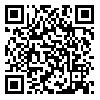Volume 3, Issue 4 (februry 2020)
ohhp 2020, 3(4): 319-330 |
Back to browse issues page
Abstract: (1526 Views)
Introduction: In recent years, unauthorized disposal of the hazardous wastes has threatened the human health and created many environmental problems in human societies. Given the direct and indirect hazards of these wastes, it is essential to collect information with regard to their appropriate management in Iran. The purpose of this study was to determine the quantity and quality of the hazardous waste and its management in industries of Damghan City in Iran.
Methods: Initially, the list of industries in Damghan City was prepared. Later, the necessary coordination was made with the relevant organizations and active units were identified. After the field tours, information on the quality, quantity, and management of the hazardous wastes was collected by a questionnaire.
Results: The results showed that the total hazardous waste products in the investigated industries were 4795 kg per month; 36.36% of the industries produced toxic substances, 9.09% created corrosive substances, 36.36% flammable materials, and 18.18% resulted in reactive substances. None of the studied industrial units had a control system after disposal of the industrial hazardous waste. Furthermore, only 36.36% of the industries had specialized staff to collect and dispose the hazardous waste.
Conclusion: To prevent environmental pollution and preserve the human health, a proper management system should be established for organizing the industrial wastes. Furthermore, identifying and gathering information about the industrial processes, raw materials, and waste products can be very useful in managing hazardous industrial wastes.
Methods: Initially, the list of industries in Damghan City was prepared. Later, the necessary coordination was made with the relevant organizations and active units were identified. After the field tours, information on the quality, quantity, and management of the hazardous wastes was collected by a questionnaire.
Results: The results showed that the total hazardous waste products in the investigated industries were 4795 kg per month; 36.36% of the industries produced toxic substances, 9.09% created corrosive substances, 36.36% flammable materials, and 18.18% resulted in reactive substances. None of the studied industrial units had a control system after disposal of the industrial hazardous waste. Furthermore, only 36.36% of the industries had specialized staff to collect and dispose the hazardous waste.
Conclusion: To prevent environmental pollution and preserve the human health, a proper management system should be established for organizing the industrial wastes. Furthermore, identifying and gathering information about the industrial processes, raw materials, and waste products can be very useful in managing hazardous industrial wastes.
Type of Study: Research |
Subject:
All of the occupational health field
Received: 2019/04/28 | Accepted: 2019/10/30 | Published: 2020/02/29
Received: 2019/04/28 | Accepted: 2019/10/30 | Published: 2020/02/29
| Rights and permissions | |
 |
This work is licensed under a Creative Commons Attribution-NonCommercial 4.0 International License. |



